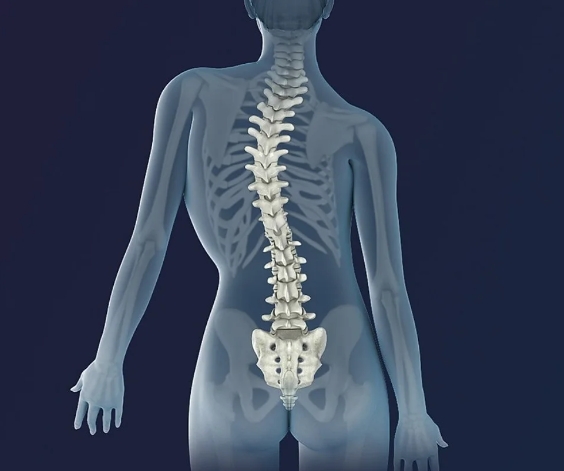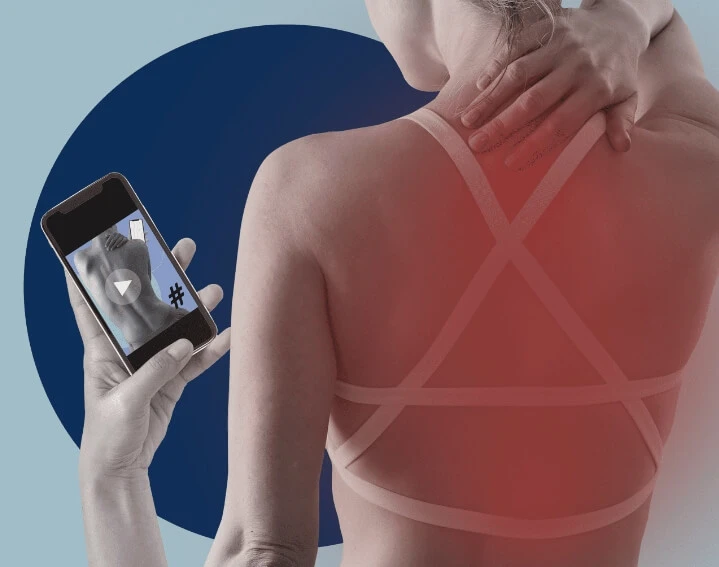In recent years, scoliosis examination has frequently come into public view. Scoliosis is listed as a key screening and monitoring disease for adolescents. However, due to the lack of early collective awareness of scoliosis, scoliosis examination in schools and education is still in its infancy, traditional screening methods, and lack of digital management systems, etc. Due to factor limitations, scoliosis examination has not yet achieved large-scale coverage in a short period of time.
Scoliosis Examination Overview
Scoliosis is a three-dimensional deformity of the spine such as lateral curvature of the spine in the coronal plane, changes in physiological curvature in the sagittal plane, and rotation of the vertebral body in the cross-section. However, due to the relatively insidious early manifestations of scoliosis, there was a significant lack of awareness of scoliosis among children, adolescents and their parents in the past.
In recent years, the prevalence of scoliosis among children and adolescents in China has been on the rise. According to statistics, the number of scoliosis among primary and secondary school students in my country currently exceeds 5 million, and is still increasing at a rate of about 300,000 every year. Early detection and treatment can help inhibit progressive changes in muscles and bones, and can effectively control or reverse scoliosis. It is for this reason that scoliosis examination is becoming more and more popular.
After scoliosis examination is included in the physical examination every school year or for freshmen, as regions respond to policies, the demand for scoliosis examination, which has been ignored in the past, will increase significantly, providing a broader space for the development of emerging technologies. development space.
Scoliosis Examination Steps and Questions
In the past, scoliosis examination work at home and abroad mainly included three steps: primary examination in schools, secondary examination, and third examination in hospitals. Among them, the preliminary detection of scoliosis is the focus of the current policy.
Initial screening methods include physical examination, Adams forward flexion test with scoliometer, Moire measurement method, and X-ray radiological examination. Although traditional scoliosis screening methods are still widely used in clinical practice, it is unavoidable that traditional methods have obvious disadvantages such as large measurement errors, low sensitivity, long detection time, high labor costs, and radiation damage to the human body. It is basically unable to meet the large number of screening needs. This is also one of the important factors why spinal health management was carried out locally in various places from 1980 to 2021, but there was almost no large-scale screening nationwide.
What Kind of Scoliosis Examination Equipment Does the Market Need?
Digital trends of Scoliosis Examination
In addition to popularizing relevant knowledge, digitization is an important direction for the development of scoliosis examination.
From a technical point of view, many companies have begun to develop various screening products. At the same time, they are actively introducing cutting-edge technologies such as ultrasound, intelligent light sensing technology, and artificial intelligence in an attempt to build a more efficient, radiation-free, and highly accurate screening system, low learning curve detection method to solve the pain points of traditional scoliosis examination screening and meet the growing market demand.
Scoliosis Examination Equipment Requirements
Through feedback from actual scoliosis screening scenarios to the market, experts believe that the most suitable tool for scoliosis screening must have the following characteristics: simple operation, fast process, accurate measurement results, and no limitations on usage scenarios. Digitization of test results, etc.
Among them, Forethought has developed a spine health examination equipment that integrates light sensing technology, terrain scanning technology, multi-sensor information fusion technology, as well as gain control technology, digital twin technology and digital mapping technology. It can currently measure the Cobb angle and ATR of the spine without radiation. angle, and generate a 3D spine report diagram.
It is worth mentioning that Forethought’s technology is currently the only tool on the market that can measure the Cobb angle of the spine in a standing position. The value of the Cobb angle is also the only standard for evaluating scoliosis. The “three-dimensional electronic spine measuring instrument” independently developed by the company only takes about 10 seconds to determine whether there is scoliosis, and can measure without taking off clothes. At the same time, it solves the problem caused by uneven doctors’ skills in the traditional scoliosis diagnosis process. It solves the problems of high false positive rate, poor reproducibility of results and large radiation area. It truly breaks the limitations of venue, technology and personnel and can meet the needs of large-scale spinal health screening.
In addition, Forethought has also developed the “Spine whale” for home scenarios. In just one minute, users can measure spinal health indicators, view detailed reports through the APP, and share them with online experts to obtain professional information. Analysis and suggestions truly realize the seamless connection between B-end and C-end, hospital and family, and provide children and adolescents with a full range of spinal health management services, in line with the development direction pointed by the policy.
This year, Forethought has also successively obtained the US FDA certification, the EU CE certification, and an Internet hospital license. As a scoliosis screening technology provider, it participated in the “2023 Sanya Scoliosis Screening Project for Primary and Secondary School Students Preliminary Screening Technology Project” ”, achieving for the first time in a nationwide government screening project the use of radiation-free measurement tools that can directly obtain the Cobb angle to conduct spine health testing on 112,000 primary and secondary school students in the city, truly opening up the entire link of scoliosis screening, diagnosis and treatment business.

Future Outlook of Forethought
In the future, with the continuous advancement of scoliosis examination and health management across the country, it is foreseeable that scoliosis examination and health management will become a comprehensive work involving medical and health institutions, schools, families and other parties. And related demands will continue to increase.
As one of the few companies to receive financing on this track this year, Forethought not only received capital recognition, but also ran very fast. In just 2 years since its establishment, it has applied for 28 patents, been recognized as a national high-tech enterprise, obtained Class II medical device registration certificate, EU CE certification, FDA certification, Internet hospital license, passed the novelty check of the Chinese Academy of Sciences, and obtained non-radiation testing certification. Using scoliosis detection equipment as the fulcrum, it solves the pain points of traditional scoliosis screening.
In November this year, Forethought brought its second-generation products to Medica in Germany. Its technology is favored by agents in various countries across the country. It is reported that they have cooperated with Italy, Turkey, Romania, Albania, Germany, Brazil, Morocco, South Korea, Agents in India, France, Taiwan, Hong Kong, Colombia and other regions have reached preliminary cooperation intentions. In 2024, Forethought will officially open up the international market.
At present, Forethought has also developed a series of smart braces, created a scoliosis training gymnastics interactive community, and established a specialized Internet hospital for spine screening, with the support of innovative equipment, truly providing children and adolescents with comprehensive services. A comprehensive range of spinal health management services.
This is exactly the value of innovative scoliosis examination equipment research and development companies such as Forethought. Taking greater steps to solve the obvious shortcomings of traditional methods such as large measurement errors, long detection time, and artificial radiation damage to the human body, to meet the continued growth of market demand, and to make scoliosis screening in various regions included in the physical examination every school year or for new students possible.
References
- [1] Schlosser TP, van Stralen M, Brink RC, et al. “The Role of Technology in Scoliosis Treatment.” Eur Spine J. 2021;30(6):1571-1581. doi: 10.1007/s00586-020-06582-3.
- [2] Zheng Y, Wang W, Zhang L, et al. “Radiation-Free 3D Scoliosis Imaging System for Early Detection and Management.” Ann Biomed Eng. 2018;46(12):2015-2025. doi: 10.1007/s10439-018-2102-1.
- [3] Negrini S, Donzelli S, Aulisa AG, et al. “2016 SOSORT guidelines: Orthopaedic and rehabilitation treatment of idiopathic scoliosis during growth.” Scoliosis and Spinal Disorders. 2018;13:3. doi: 10.1186/s13013-018-0175-8.
- [4] Lee H, Parent EC, Faro FD, et al. “Advances in Scoliosis Imaging and Monitoring.” Clin Orthop Relat Res. 2015;473(3):735-742. doi: 10.1007/s11999-014-4056-y.
- [5] Hresko MT, Gupta R, Green DW, et al. “The Role of Scoliosis Platforms in Monitoring Treatment Progress.” Spine (Phila Pa 1976). 2018;43(22). doi: 10.1097/BRS.0000000000002705.
- [6] Liu Z, Li X, Zhao Y, et al. “Artificial Intelligence in Scoliosis Detection: Applications and Advances.” Comput Med Imaging Graph. 2020;86:101815. doi: 10.1016/j.compmedimag.2020.101815.
- [7] Matsumoto H, Hoshino M, Tsujimoto N, et al. “Scoliosis Screening and the Future of Monitoring Technology.” Spine J. 2020;20(4):640-648. doi: 10.1016/j.spinee.2019.10.018.
- [8] Glassman SD, Dimar JR, Horton WC, et al. “Recent Developments in Digital Scoliosis Monitoring Systems.” J Spinal Disord Tech. 2018;31(1). doi: 10.1097/BSD.0000000000000574.
- [9] Kotwicki T, Grivas TB, Negrini S, et al. “Adolescent Idiopathic Scoliosis: Diagnostics and Current Practices.” J Child Orthop. 2016;10(1):1-13. doi: 10.1007/s11832-015-0710-1.
- [10] Bunge EM, Juttmann RE, van Biezen FC, et al. “Early Detection and Screening Platforms for Scoliosis: Current Trends and Future Directions.” Eur Spine J. 2017;26(7):1780-1789. doi: 10.1007/s00586-017-5069-2.
- [11] Richards BS, Sucato DJ, Johnston CE, et al. “Advances in Home Monitoring Devices for Scoliosis: A Comprehensive Review.” Spine Deform. 2019;7(3):283-291. doi: 10.1016/j.jspd.2019.01.001.
- [12] Ma Q, Liu Z, Zheng Y, et al. “Evaluation of the Safety and Accuracy of 3D Scoliosis Imaging: A Radiation-Free Solution.” Spine (Phila Pa 1976). 2017;42(8). doi: 10.1097/BRS.0000000000001873.
- [13] Schlosser TP, van Stralen M, Brink RC, et al. “The Future of Digital Health Platforms in Scoliosis Management.” J Pediatr Orthop. 2021;41(Suppl 1). doi: 10.1097/BPO.0000000000001829.
- [14] Kotwicki T, Negrini S, Grivas TB, et al. “Innovations in Scoliosis Screening: The Impact of Digital Technology.” Eur Spine J. 2018;27(12):2895-2903. doi: 10.1007/s00586-018-5762-5.
- [15] Ovadia D, Eiskovits M, Floman Y, et al. “Integrating Smart Braces with Home Monitoring Systems: A New Approach to Scoliosis Management.” Spine J. 2020;20(2):246-256. doi: 10.1016/j.spinee.2019.11.012.

